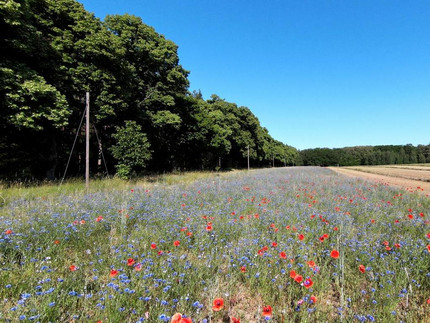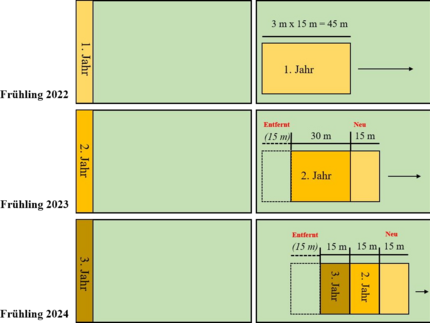Linde Wildflower Experiment
The Linde Wildflower Experiment is conducted at Linde Research Station and is funded by Zwillenberg-Tietz Stiftung, Havelland, Brandenburg. We are comparing biodiversity and abundance of various insect taxa in convential wildflower (WF) strips to those in an innovative design of Rolling WF blocks, and investigate their effectiveness on the diversity. Both, WF strips and blocks are used as structural elements to enrich biodiversity in agri-ecosystems.
It started in March 2022 with an initial project duration of three years.
We compare the effectiveness of WFS with an innovative rolling wildflower block (RWB) design on insect diversity and population (see Eccard et al. 2022 ). In the RWB design, a newly sown zone is added each year and the oldest zone is removed so that the block “rolls” across the field (Fig. 3), allowing the maintenance of a local refuge for attracted insect populations. In the RWB we try to improve and address the following points: 1) creating a mobile but permanent habitat without removal after a short time, 2) increasing structural diversity through parallel successional stages within a block element and 3) reducing the edge effect through the block shape of the structural element.
Project members
Vera Kaunath
Dr. Liana Kindermann
Prof. Dr. Jana Eccard
Prof. Dr. Anja Linstädter
Prof. Dr. Josef Settele
Prof. Dr. Stefan Norra


